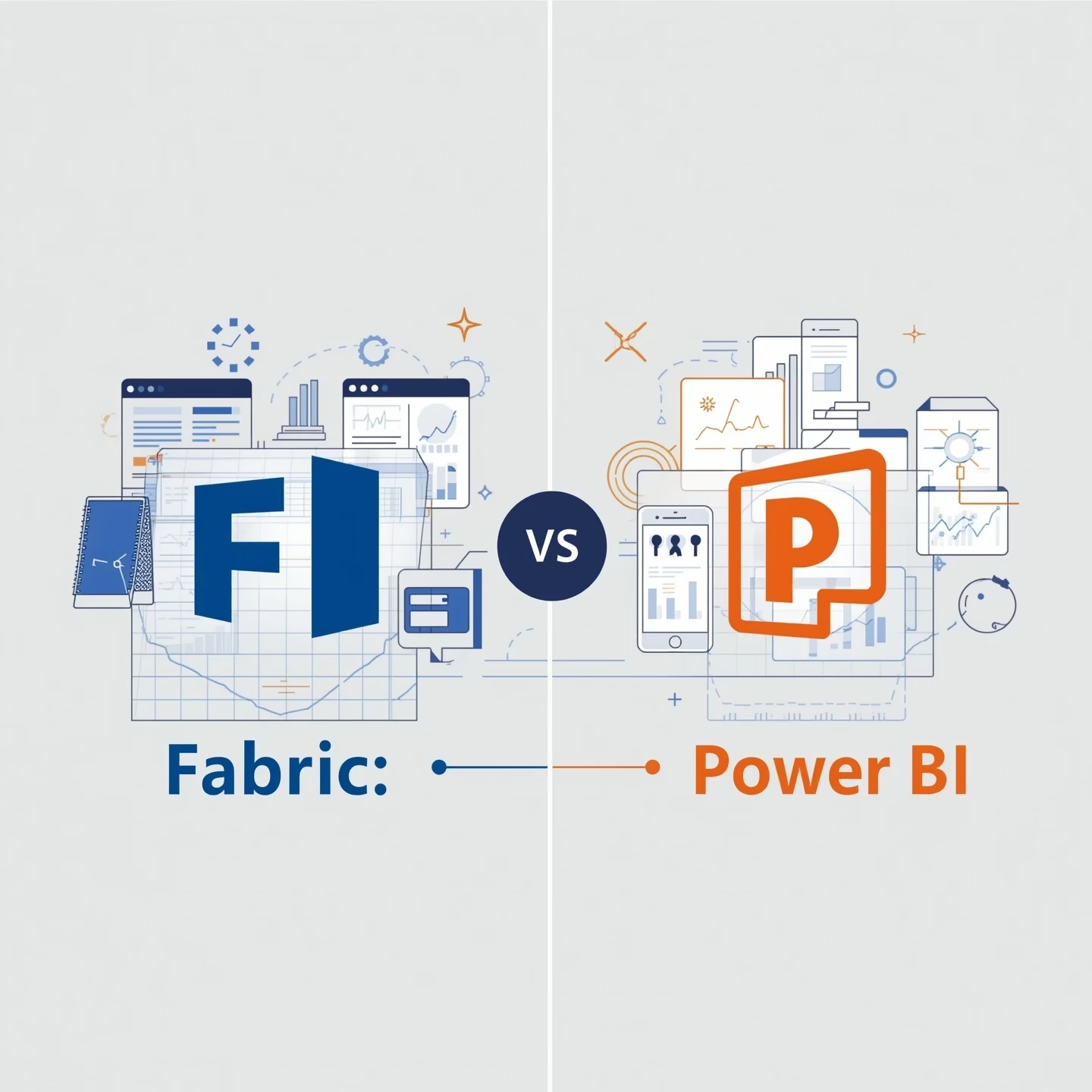Microsoft Fabric vs Power BI: Which Analytics Powerhouse Is Right for You?
Microsoft Fabric and Power BI are two powerful offerings within Microsoft’s analytics ecosystem. While PowerBI has long been the go-to tool for business intelligence and data visualisation, Microsoft Fabric expands the scope into a full end-to-end analytics platform, integrating data engineering, warehousing, data science, real-time analytics, and BI in one unified environment.
What Is Power BI?
Power BI is Microsoft’s flagship business intelligence (BI) and data visualization service, designed to transform raw data into interactive dashboards and reports. Since its launch in 2015, Power BI has become one of the leading self-service BI tools, serving hundreds of thousands of organizations worldwide. Key components include:
Power BI excels at intuitive drag-and-drop report building, natural-language Q&A queries, embedded analytics, and rapid dashboard development without requiring deep technical expertise.
What Is Microsoft Fabric?
Microsoft Fabric is an AI-powered, cloud-based platform that unifies the entire data lifecycle—from ingestion and transformation to analysis, visualization, and real-time eventing. Launched in 2023 and generally available in 2024, Fabric brings together multiple workloads under a single pane of glass. Core components include:
This integrated approach simplifies governance, enhances collaboration across teams, and supports advanced AI-driven analytics workflows.
Key Differences
Microsoft Fabric: Utilizes OneLake’s lakehouse architecture, combining the scalability of data lakes with the performance of data warehouses in a single storage layer.
Power BI: Relies on imported in-memory models or DirectQuery connections to external sources. It wasn’t designed for large-scale data engineering or streaming without additional services.
Microsoft Fabric: An end-to-end data platform encompassing integration, engineering, warehousing, science, governance, and BI.
Power BI: Specialized in data visualization, dashboarding, report distribution, and self-service analytics—the “last mile” of the analytics process.
Microsoft Fabric: Data engineers, data scientists, analytics architects, and enterprises requiring a unified analytics platform.
Power BI: Business analysts, department managers, and non-technical users seeking to build and consume insights with minimal training.
Microsoft Fabric: Offers unified security, lineage tracking, sensitivity labeling, and compliance across all workloads.
Power BI: Provides workspace-based access controls, row- and object-level security, and integration with Microsoft 365 compliance features, but governance is centered around BI assets.
Microsoft Fabric: Capacity-based licensing via Fabric SKUs (F2–F2048), measured in Capacity Units (CUs), unlocking all Fabric workloads including Power BI.
Power BI: Per-user licensing with Power BI Pro or Premium Per User (PPU), plus capacity-based Power BI Premium (P SKUs) for enterprise scenarios.
Use Cases
Pros & Cons
Pros:
Microsoft Fabric
How They Work Together
Rather than competing, Fabric and Power BI are complementary. In Fabric, Power BI acts as the dedicated visualization layer, connecting natively to OneLake via Direct Lake Mode. Shared workspaces, unified semantic models, and consistent security make it easy to build, share, and govern BI assets on top of Fabric’s data services.
Which One Should You Choose?
Power BI:
Choose Power BI if your needs center on interactive dashboards, departmental reporting, and you value rapid deployment with minimal technical overhead.
Microsoft Fabric:
Opt for Fabric if your organization demands an integrated data platform for large-scale engineering, AI/ML workflows, real-time analytics, and centralized governance.
Hybrid Approach:
Many organisations start with Power BI for immediate visualisation needs and gradually adopt Fabric workloads as their data complexity and engineering requirements grow.
Ultimately, align your choice with your data complexity, user proficiency, scale requirements, and budget to build a future-proof analytics strategy.
Conclusion
Both Microsoft Fabric and Power BI bring unique strengths to the table. If you’re looking for a fast, user-friendly way to create and share dashboards, Power BI is the ideal choice. However, if your organization requires a robust, unified platform that covers everything from data ingestion to machine learning, Microsoft Fabric is the way forward. And for professionals or teams in Hyderabad eager to elevate their analytics capabilities, enrolling in Power BI Training in Hyderabad can provide the hands-on skills and best practices needed to harness the full power of Microsoft’s BI tools.
